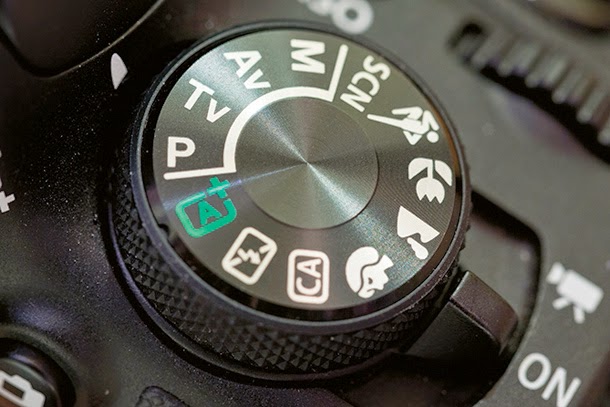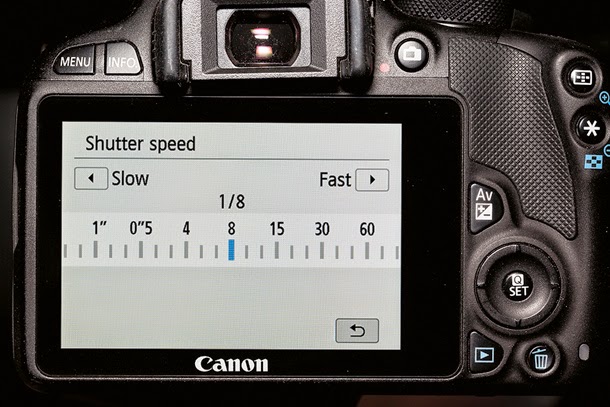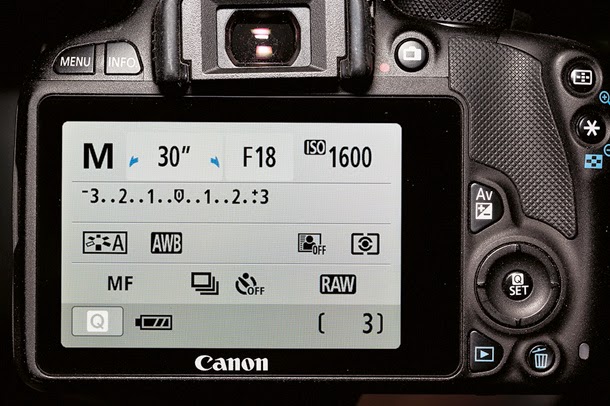What is shutter speed? In this quick primer we’ll explain how to use shutter speed to make your exposures faster or slower for instant photographic creativity.
What is shutter speed and what does it do?
Shutter speed is a measure of how long your camera’s sensor (the digital equivalent of film) is exposed to light.
Most DSLRs use a mechanical shutter to control this. When you press the shutter release button or use the camera’s self-timer function, the blades that block the sensor open and close, letting light in.
How long should the shutter be open?
It depends on the amount of light that’s available. Typically, lower light levels demand longer shutter speeds while brighter conditions require much shorter shutter speeds to make an exposure.
Significantly, the choice of shutter speed also has an impact on how movement is recorded in the picture.
The longer the shutter is open, the greater the likelihood there is of any movement being blurred.
As a rule, you’d use the fastest shutter speeds for fast-moving subjects, to stop the motion and make sharp pictures. But rules are meant to be broken!
You can select from a much wider range of shutter speeds than the one suggested by the camera.
What do you mean?
Say you’re shooting action, such as a horse galloping or a car on a race track. To get a sharp shot, you may need a shutter speed close to 1/1,000 sec or 1/2,000 sec.
Freezing the action this way might reveal detail you’d miss with the naked eye, but it can also rob a scene of its sense of speed.
Using a slower shutter speed would allow the shutter to stay open for longer, and some of the moving parts to become blurred – an effective technique for action photography when combined with ‘panning’.
By moving the camera so the subject stays more or less in the same position within the frame, it will remain sharp, while the moving background will be rendered as a blur.
How do I know which shutter speed will produce the best effect?
It depends on the speed at which the subject is moving. It’s often a fine line between the perfect blend of blur and sharpness, and something that looks like a mistake.
That galloping horse? You can probably get away with 1/50 sec for a panned shot, but a Formula One car would still need a nippy ‘slow’ shutter speed in the region of 1/500 sec for a similar degree of blur.
A monopod or an image-stabilised lens helps to support the camera at these lower speeds, ensuring a smooth pan in one direction.
If you’re using very slow shutter speeds, you’ll get better results with a tripod – and in many cases, it’s a necessity.
What filters do I need?
Neutral-density filters. These dark grey filters block the amount of light entering the lens and are available in a range of different strengths, each enabling the use of progressively slower shutter speeds.
Very strong ND filters, combined with small apertures and low ISO sensitivities, enable the use of shutter speeds that stretch for minutes, even in the middle of a clear summer day.
They’re routinely used to create minimalist long-exposure coastal pictures in which a rough sea resembles a polished ice rink.
Of course, if you’re shooting at night you may not need a filter at all, as exposures will be naturally be much longer.
The longest shutter speed available in Shutter Priority is 30 seconds. Where’s the ‘minutes’ option?
To go beyond 30 seconds, you’ll need to use your camera’s Bulb exposure mode.
On most cameras you can access this via the B setting on the mode dial, or by scrolling past the 30 second mark in Manual exposure mode until ‘Bulb’ appears on the display.
In Bulb mode, the shutter stays open for as long as you keep the shutter release button depressed.
It’s best to use a remote release to do this, as pressing the button on the camera for minutes at a time isn’t very practical.
At night, you can use Bulb mode to photograph star trails, firework displays and moonlit landscapes. It’s also the mode of choice for shots taken with very strong ND filters.
Very slow shutter speed
A shutter speed of over a second can be used to show the effects of wind on foliage and water, or to create abstract blurs using intentional movement.
To achieve a slow enough shutter speed, you’ll need to use smaller apertures and lower ISO settings.
Shooting when light levels are lower, early in the morning and late in the evening, will help, although you may need to use an ND filter to reduce exposure time in bright conditions.
Slow shutter speed
To inject a sense of motion into panning shots, use a slow shutter speed, relative to the speed of the subject.
Here we needed a shutter speed of 1/25 sec to render the fast-moving rotor blades as a blur, while keeping a good level of sharpness in the rest of the image as we moved the camera to track the helicopter.
We were working in Aperture Priority mode, and had to dial in a small aperture of f/14 to achieve the effect.
Fast shutter speed
To completely freeze movement, you’ll need a fast shutter speed. Particularly fast-moving subjects may require shutter speeds of 1/1,000 sec or faster; to achieve this, you’ll need plenty of light, wide apertures and high ISOs.
Capturing the ripples here required an exposure of 1/400 sec at f/8.
A slower shutter speed would have meant too much blur, while a faster speed would have meant using a wider aperture and reduced depth of field.
Check the setting
As you rotate the control dial, check the shutter speed in the viewfinder or on the display. The typical range is from 30 seconds to 1/4,000 sec; you’ll need plenty of light, a large aperture and a high ISO setting to achieve the fastest speeds.
Going slower
You can set a specific shutter speed in Manual, although you’ll need to set the aperture too. Even then, the slowest shutter speed available is 30 seconds. To go slower, use Bulb mode and press the shutter release for the desired length of time.
What is shutter speed and what does it do?
Shutter speed is a measure of how long your camera’s sensor (the digital equivalent of film) is exposed to light.
Most DSLRs use a mechanical shutter to control this. When you press the shutter release button or use the camera’s self-timer function, the blades that block the sensor open and close, letting light in.
How long should the shutter be open?
It depends on the amount of light that’s available. Typically, lower light levels demand longer shutter speeds while brighter conditions require much shorter shutter speeds to make an exposure.
Significantly, the choice of shutter speed also has an impact on how movement is recorded in the picture.
The longer the shutter is open, the greater the likelihood there is of any movement being blurred.
As a rule, you’d use the fastest shutter speeds for fast-moving subjects, to stop the motion and make sharp pictures. But rules are meant to be broken!
You can select from a much wider range of shutter speeds than the one suggested by the camera.
What do you mean?
Say you’re shooting action, such as a horse galloping or a car on a race track. To get a sharp shot, you may need a shutter speed close to 1/1,000 sec or 1/2,000 sec.
Freezing the action this way might reveal detail you’d miss with the naked eye, but it can also rob a scene of its sense of speed.
Using a slower shutter speed would allow the shutter to stay open for longer, and some of the moving parts to become blurred – an effective technique for action photography when combined with ‘panning’.
By moving the camera so the subject stays more or less in the same position within the frame, it will remain sharp, while the moving background will be rendered as a blur.
How do I know which shutter speed will produce the best effect?
It depends on the speed at which the subject is moving. It’s often a fine line between the perfect blend of blur and sharpness, and something that looks like a mistake.
That galloping horse? You can probably get away with 1/50 sec for a panned shot, but a Formula One car would still need a nippy ‘slow’ shutter speed in the region of 1/500 sec for a similar degree of blur.
A monopod or an image-stabilised lens helps to support the camera at these lower speeds, ensuring a smooth pan in one direction.
If you’re using very slow shutter speeds, you’ll get better results with a tripod – and in many cases, it’s a necessity.
When would I use very slow speeds?
Landscape photographers typically use long exposures that last for multiple seconds, even many minutes.
This is often the trade-off that comes from using small apertures to increase the depth of field and sharpness in a scene.
Remember that making an exposure is a balancing act between shutter speed, aperture and ISO: as one increases, one of the other two settings has to decrease to maintain the same exposure level.
However, a long exposure can transform a lifeless landscape. Moving water, whether it’s a waterfall, river or waves, will melt into a milky white blur, while trees and flowers blown by the wind add a painterly quality to pictures.
The shutter speeds required to achieve these effects depend on how much light there is and how fast the element is moving.
The strength of the effect is largely a matter of taste too, but anything from 1/15 sec to 10 seconds will produce interesting results.
To achieve exposures as long as this in daylight may require the use of filters on the lens.
What filters do I need?
Neutral-density filters. These dark grey filters block the amount of light entering the lens and are available in a range of different strengths, each enabling the use of progressively slower shutter speeds.Very strong ND filters, combined with small apertures and low ISO sensitivities, enable the use of shutter speeds that stretch for minutes, even in the middle of a clear summer day.
They’re routinely used to create minimalist long-exposure coastal pictures in which a rough sea resembles a polished ice rink.
Of course, if you’re shooting at night you may not need a filter at all, as exposures will be naturally be much longer.
The longest shutter speed available in Shutter Priority is 30 seconds. Where’s the ‘minutes’ option?
To go beyond 30 seconds, you’ll need to use your camera’s Bulb exposure mode.
On most cameras you can access this via the B setting on the mode dial, or by scrolling past the 30 second mark in Manual exposure mode until ‘Bulb’ appears on the display.
In Bulb mode, the shutter stays open for as long as you keep the shutter release button depressed.
It’s best to use a remote release to do this, as pressing the button on the camera for minutes at a time isn’t very practical.
At night, you can use Bulb mode to photograph star trails, firework displays and moonlit landscapes. It’s also the mode of choice for shots taken with very strong ND filters.
Which shutter speed is best?
Very slow shutter speed
A shutter speed of over a second can be used to show the effects of wind on foliage and water, or to create abstract blurs using intentional movement.To achieve a slow enough shutter speed, you’ll need to use smaller apertures and lower ISO settings.
Shooting when light levels are lower, early in the morning and late in the evening, will help, although you may need to use an ND filter to reduce exposure time in bright conditions.
Slow shutter speed
To inject a sense of motion into panning shots, use a slow shutter speed, relative to the speed of the subject.Here we needed a shutter speed of 1/25 sec to render the fast-moving rotor blades as a blur, while keeping a good level of sharpness in the rest of the image as we moved the camera to track the helicopter.
We were working in Aperture Priority mode, and had to dial in a small aperture of f/14 to achieve the effect.
Fast shutter speed
To completely freeze movement, you’ll need a fast shutter speed. Particularly fast-moving subjects may require shutter speeds of 1/1,000 sec or faster; to achieve this, you’ll need plenty of light, wide apertures and high ISOs.Capturing the ripples here required an exposure of 1/400 sec at f/8.
A slower shutter speed would have meant too much blur, while a faster speed would have meant using a wider aperture and reduced depth of field.
How to control shutter speed?
Use Shutter Priority
Shutter Priority mode gives direct control over the shutter speed, with the camera selecting an appropriate aperture to produce a balanced exposure. Turn the mode dial to S or Tv, and rotate the control dial to select the duration of the exposure.
Check the setting
Going slower
You can set a specific shutter speed in Manual, although you’ll need to set the aperture too. Even then, the slowest shutter speed available is 30 seconds. To go slower, use Bulb mode and press the shutter release for the desired length of time.



No comments:
Post a Comment